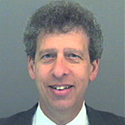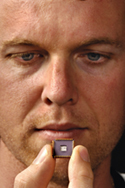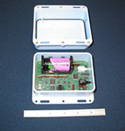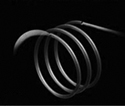NEWS RELEASES
FOR IMMEDIATE RELEASE
February 13, 2008
Sandia researchers demonstrate verve in transferring Labs technology to private sector
Lab wins four awards from Federal Laboratory Consortium
ALBUQUERQUE, N.M. —Three Sandia National Laboratories research teams and one Sandia executive will be presented national awards by the Federal Laboratory Consortium (FLC) for their skills in transferring technology from Sandia to the private sector.
Team trophies and individual leather-bound certificates will be provided to 2007 winners on May 8 in Portland, Ore.
The four awards (one was joint) were the most won by any national laboratory.
The Cherry Hills, N.J.-based FLC maintains a nationwide network that helps link federal laboratory technologies with the marketplace.
Sandia is a National Nuclear Security Administration laboratory
Sandia’s “ElectroNeedle Biomedical Sensor Array” and the “Secure Sensor and Seal Technologies for Global Nuclear Non-proliferation” won Excellence in Technology Transfer awards.
The electroneedle sensor, when pressed against the skin, provides rapid, on-demand, point-of-care biomedical assays for medical diagnosis.
Two new biotechnology companies — New Mexico Biotech Inc. and Life BioScience Inc. — have been formed in Albuquerque explicitly for ElectroNeedle commercialization.
The Secure Sensor forms a seal that alerts security personnel via radio frequency if it is broken. These seals are intended for long-term use without maintenance for up to five years on one battery.
Canberra Albuquerque commercialized one aspect of the project and is collaborating on the development of a second.
Also winning an Excellence in Technology Transfer award, in a joint submission with the Naval Research Laboratory, was the “Helical Fiber Amplifier.” This method coils fibers to make high-power fiber lasers possible. The solution resolved power limitations of fiber lasers that had stymied the industry since fiber lasers were first developed in 1963, while preserving high beam-quality output.
Transfer of the helical fiber amplifier (also called mode-filtered fiber amplifier) was achieved to commercial laser manufacturers Nufern of East Granby, Conn.; Liekki Corporation of Lohja, Finland; and IMRA America Inc. of Ann Arbor, Mich. By 2006, all three companies had received patent licenses allowing use of the innovative technology in their laser-based product lines, and two subsequent licenses have since been issued.
David Goldheim, director of Sandia’s Strategic Relationships Center from 1999 to 2007, received the Outstanding Technology Transfer Professional award for numerous innovations in easing the transfer of technology.
 David Goldheim
David GoldheimGoldheim was praised for his “leadership, inventiveness, and tenacity in developing and shepherding innovative programs that support Sandia’s business development and strategic intellectual property (IP) management efforts.”
A panel of experts from industry, state and local government, academia, and the federal laboratory system judges nominations.
The FLC, organized in 1974, according to its own description “develops and tests transfer methods, addresses barriers to the process, provides training, highlights grass-roots transfer efforts, and emphasizes national initiatives where technology transfer has a role.”
“They also publicize the value of technology commercialization in national and regional forums,” says Goldheim
Sandia is a multiprogram laboratory operated by Sandia Corporation, a Lockheed Martin company, for the U.S. Department of Energy’s National Nuclear Security Administration. With main facilities in Albuquerque, N.M., and Livermore, Calif., Sandia has major R&D responsibilities in national security, energy and environmental technologies, and economic competitiveness.
Sandia news media contact: Neal Singer, nsinger@sandia.gov,
(505) 845-7078


